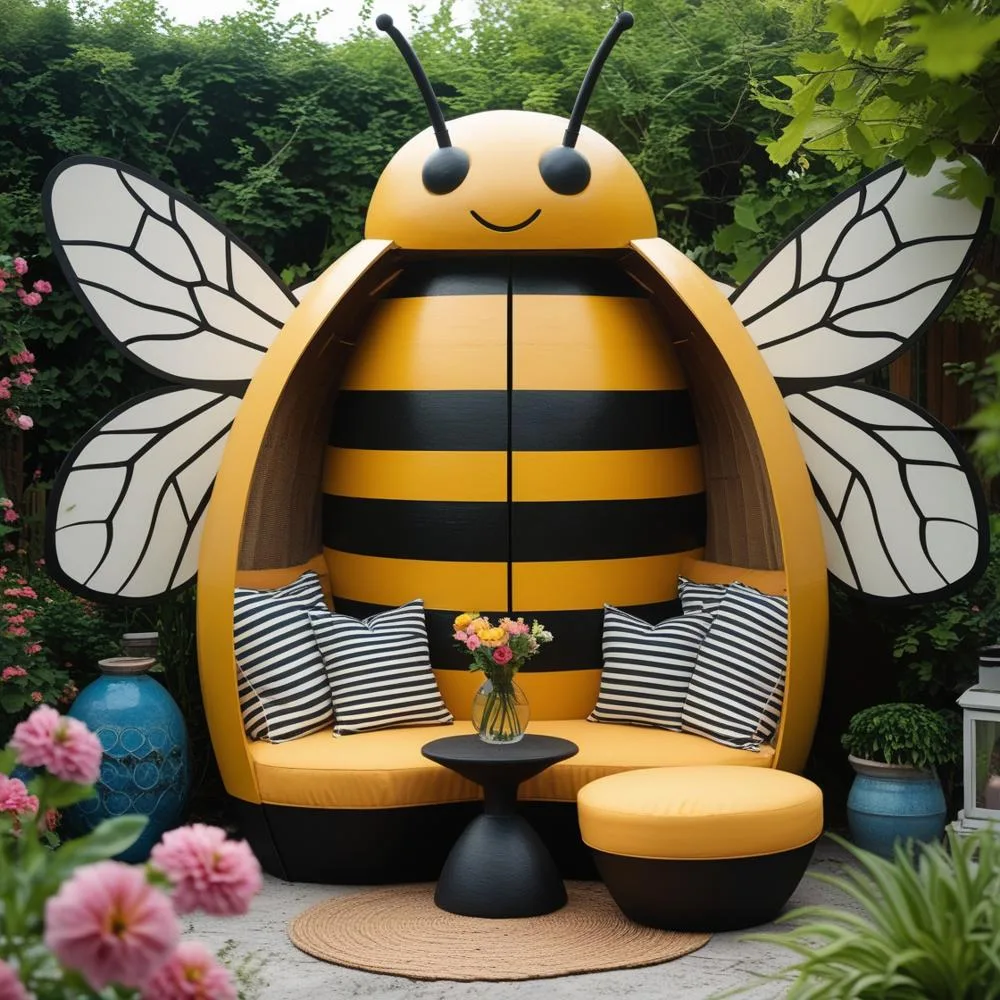In today’s fast-paced digital world, our connections to nature often become secondary to our screen time. Yet, there’s a growing movement to reclaim our outdoor spaces as extensions of our homes—places where we can relax, entertain, and reconnect with the natural world. Among the most innovative trends in landscape design is the incorporation of insect shaped outdoor seating areas that combine functionality with artistic expression, creating conversation pieces that celebrate the tiny creatures vital to our ecosystems.
These creative seating solutions aren’t just visually striking; they represent a deeper appreciation for the role insects play in our gardens and ecosystems. From butterfly benches to dragonfly daybeds, these designs offer both practical seating and symbolic acknowledgment of the creatures that help our gardens thrive.
Why Choose Insect Shaped Outdoor Seating Areas?
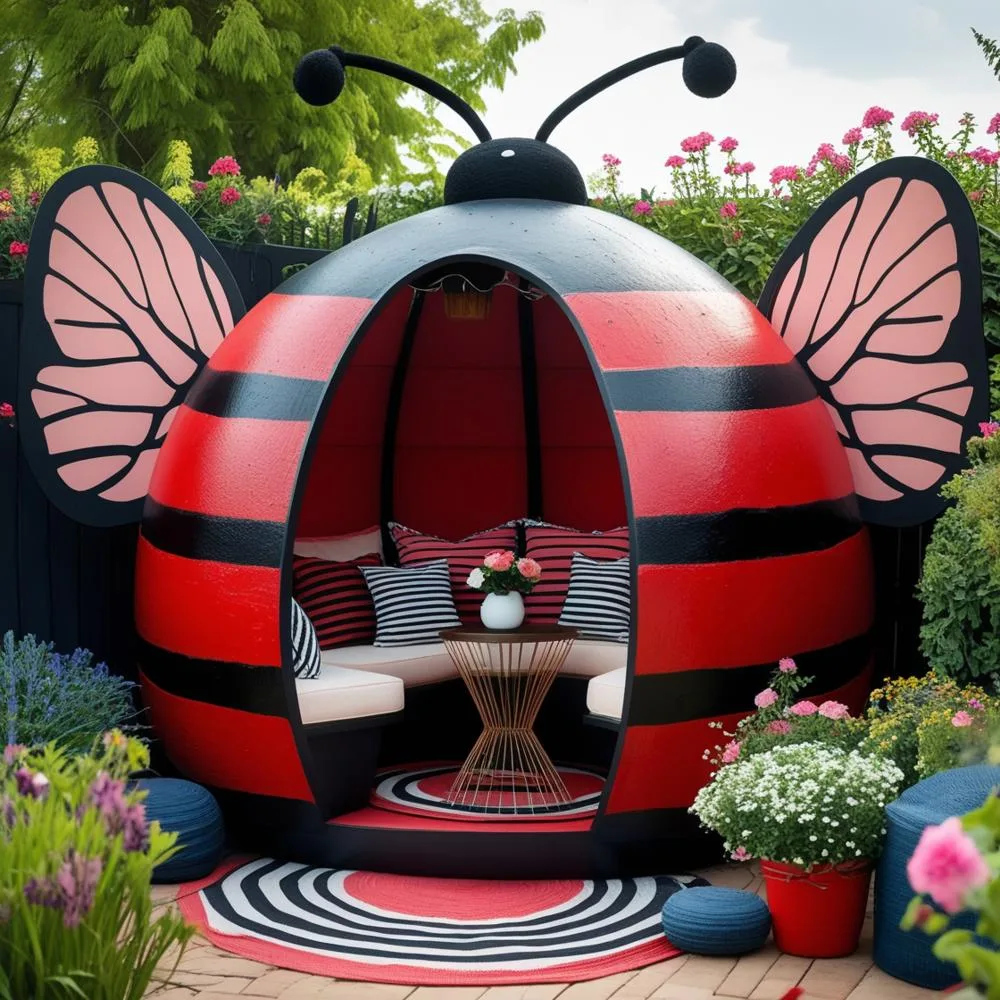
Blending Education with Entertainment
An insect shaped outdoor seating area serves as more than just a place to sit—it’s an opportunity for learning. Children and adults alike can appreciate the detailed craftsmanship that goes into recreating the form of a butterfly, ladybug, or bee at a larger scale. These designs spark natural curiosity about the insects themselves, potentially leading to greater appreciation for biodiversity right in your backyard.
For families with young children, these seating areas can become launching points for conversations about pollination, life cycles, and the importance of insect conservation. Sitting on a massive butterfly bench while explaining how real butterflies help flowers reproduce creates a tangible connection between education and environment.
Creating Unforgettable Garden Focal Points
Garden design experts often emphasize the importance of focal points—elements that draw the eye and create visual interest. An insect shaped outdoor seating area accomplishes this perfectly, standing out even in the most elaborate garden settings. Whether you choose a subtle bee-shaped bench nestled among your flowering plants or an elaborate dragonfly seating arrangement spanning a section of your patio, these pieces transform ordinary gardens into extraordinary outdoor galleries.
The scale alone makes these pieces remarkable. While we’re accustomed to seeing insects at tiny sizes, recreating their forms as functional furniture allows us to appreciate their intricate designs from a completely new perspective.
Expressing Personal Style Through Unconventional Choices
Your garden reflects your personality just as much as your interior design does. Choosing an insect shaped outdoor seating area demonstrates creativity and a willingness to embrace unconventional design elements. It tells visitors that you value imagination and aren’t afraid to make bold choices that express your unique aesthetic sensibilities.
These statement pieces also reveal something about your relationship with nature. They suggest a gardener who pays attention to the smallest details of the ecosystem, recognizing that even the tiniest garden visitors play important roles.
Popular Insect Designs for Outdoor Seating
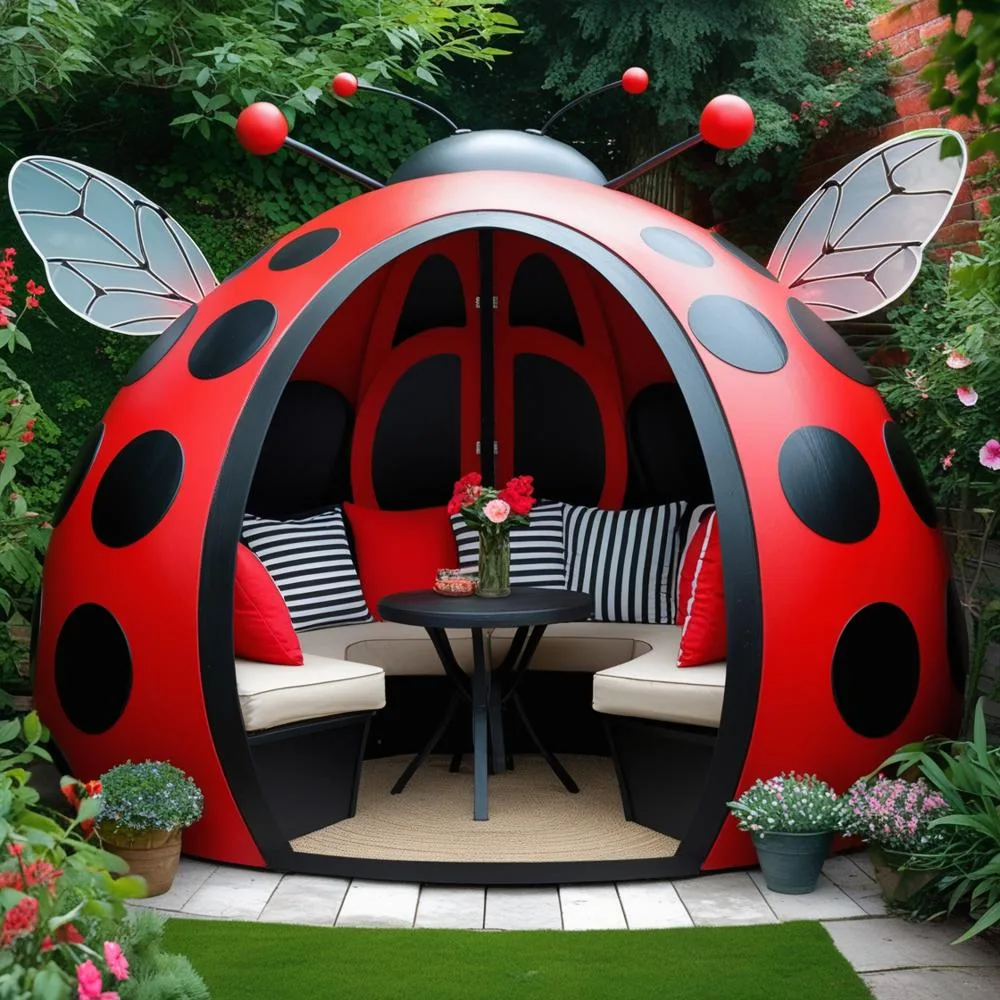
Butterfly Benches: Wings of Transformation
Butterfly-shaped seating represents one of the most popular options in the insect shaped outdoor seating area category. The symmetrical wing structure of butterflies naturally lends itself to bench design, with the wings forming comfortable seating areas on either side. Often featuring vibrant colors and intricate patterns that mimic actual butterfly species, these benches bring both beauty and symbolism to garden spaces.
Many designers incorporate realistic details like antennae and body segments, while others take a more abstract approach, capturing just the essence of butterfly form. Materials range from weather-resistant metals with powder-coated finishes to carved wood with protective sealants, each offering different aesthetic and durability advantages.
The symbolism of butterflies—transformation, hope, and new beginnings—makes these benches particularly meaningful additions to memorial gardens or spaces dedicated to personal growth and reflection.
Ladybug Loungers: Spots of Comfort
Few insects capture human affection quite like the ladybug. Considered harbingers of good luck in many cultures, these beneficial garden allies make charming inspirations for rounded seating options. Ladybug shaped outdoor seating typically features dome-shaped designs with distinctive spotted patterns in classic red and black, though creative variations in color schemes are increasingly popular.
The rounded form of ladybug seating offers ergonomic advantages, creating natural curves that support the human body comfortably. Smaller versions work well as individual seats for children, while larger interpretations can accommodate multiple adults for social gatherings.
Some innovative designs incorporate lifting “wing” sections that reveal storage space beneath—perfect for keeping garden tools, outdoor cushions, or children’s toys organized and protected from the elements.
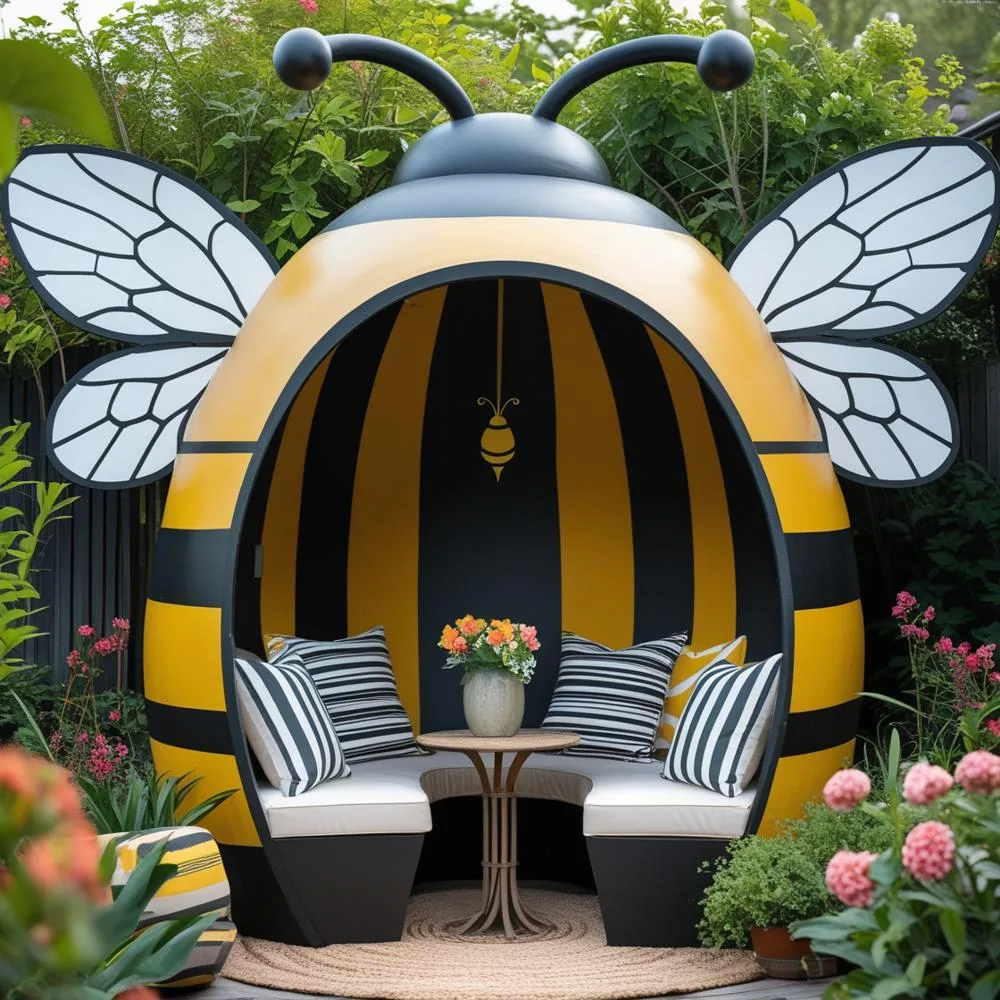
Dragonfly Daybeds: Elegant Relaxation
With their elongated bodies and spectacular wingspans, dragonflies inspire some of the most elegant insect shaped outdoor seating areas. These designs typically feature extended forms with a central body section flanked by four distinctive wings that can serve as backrests, armrests, or additional seating surfaces.
Dragonfly daybeds often incorporate flowing lines and transparent or semi-transparent materials to capture the delicate, almost ethereal quality of these insects. Metal frameworks with weather-resistant mesh or perforated patterns create the impression of dragonfly wings while allowing air circulation—an important feature for comfortable outdoor seating.
Placed near water features, these seating options create a thematically cohesive design that references dragonflies’ natural habitat, enhancing the overall sensory experience of the garden.
Bee Benches: Buzzing with Character
Celebrating perhaps the most important pollinators in our ecosystems, bee-themed seating brings both whimsy and environmental awareness to outdoor spaces. Typically featuring the distinctive black and yellow striped pattern recognized worldwide, these seating options range from realistic interpretations to stylized versions that capture the friendly, rounded essence of bumblebees.
Hexagonal shapes often appear in these designs, referencing honeycomb structures and providing opportunities for modular seating arrangements that can be reconfigured as needed. Some designers incorporate subtle buzzing sounds activated by motion sensors, creating multi-sensory experiences that delight garden visitors of all ages.
For gardens focused on pollinator support, bee shaped seating creates a thematic connection to nearby butterfly gardens or wildflower meadows, reinforcing the garden’s ecological purpose through its furniture choices.
Materials and Construction Considerations

Weather-Resistant Options for Lasting Beauty
When investing in an insect shaped outdoor seating area, durability becomes a primary concern. These sculptural pieces must withstand varying weather conditions while maintaining both structural integrity and visual appeal. Several materials offer excellent longevity for outdoor applications:
- Powder-coated steel: Combines strength with rust resistance and allows for intricate detailing and vibrant colors
- Marine-grade stainless steel: Offers exceptional durability even in coastal environments with high salt exposure
- High-density polyethylene (HDPE): Provides outstanding weather resistance and low maintenance requirements while accepting various pigments for colorful designs
- Treated hardwoods: Create warm, natural aesthetics when properly sealed and maintained annually
- Concrete or reinforced resin: Allow for flowing, organic forms with excellent stability and longevity
The connection points between different components require particular attention during construction, as these often become the first failure points in outdoor furniture. Quality insect shaped seating utilizes marine-grade hardware and reinforced joints designed specifically for outdoor applications.
Comfort Considerations Beyond Aesthetics
While visual impact drives many purchases of insect shaped outdoor seating areas, comfort determines how frequently these pieces actually get used. The best designs balance artistic expression with ergonomic principles, ensuring that seating surfaces support proper posture and provide comfortable resting experiences.
Thoughtful designers incorporate subtle contours that accommodate the human form within the insect shape, sometimes disguising these ergonomic elements within the overall design. Seating height, depth, and angle all contribute to comfort and accessibility for different users.
Many insect shaped seating options include spaces for weather-resistant cushions that enhance comfort while adding another layer of color and texture. These removable elements allow for seasonal changes and fresh design expressions without replacing the entire structure.
Installation Requirements and Stability
Safety considerations should never be compromised for aesthetic appeal. Properly installed insect shaped outdoor seating requires stable foundations that prevent tipping or shifting, particularly for larger pieces or those with unusual weight distributions.
Installation methods vary based on design and location:
- Ground anchoring: Using concrete footings or ground spikes to secure the seating to the earth
- Weighted bases: Incorporating heavy, stable platforms that maintain position without permanent installation
- Deck/patio mounting: Utilizing secure fastening systems to attach seating to existing hardscape elements
- Freestanding balance: Designing with inherently stable weight distribution requiring no additional anchoring
Professional installation may be recommended for larger or more complex designs, ensuring both safety and proper positioning within the garden landscape.
DIY vs. Professional Options
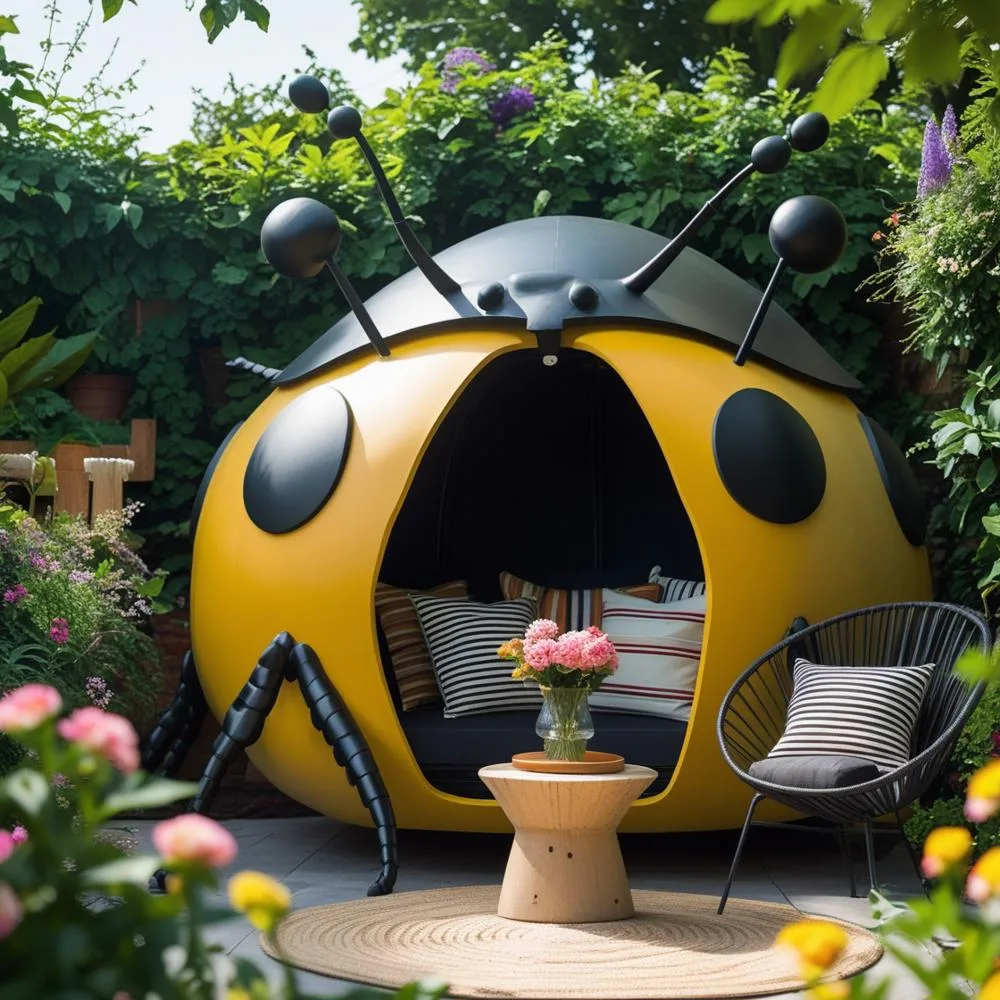
Creating Your Own Insect Shaped Seating
For crafty homeowners with woodworking or metalworking skills, creating a custom insect shaped outdoor seating area offers profound satisfaction and potential cost savings. DIY approaches range from modifying existing furniture pieces to building complete original designs from raw materials.
Several approaches work well for DIY enthusiasts:
- Converting bench ends into butterfly wings with custom-cut plywood additions
- Repurposing old metal headboards as the framework for dragonfly wing backrests
- Using concrete forming techniques to create ladybug-shaped garden stools
- Applying insect-themed decorative elements to conventional outdoor furniture
Online templates and instructional videos have made ambitious projects more accessible to home craftspeople, though realistic assessment of skill level remains important before undertaking large structural pieces that must bear significant weight safely.
Commissioning Custom Artisan Pieces
For unique, heirloom-quality insect shaped outdoor seating areas, commissioning work from professional artisans offers advantages in design sophistication, structural integrity, and fine detailing. Metal sculptors, fine woodworkers, and concrete artisans specializing in outdoor installations can create truly spectacular pieces that serve as garden centerpieces for decades.
Working with professionals allows for completely customized designs that perfectly fit your space requirements and aesthetic preferences. Many artisans welcome collaborative design processes, incorporating elements that hold personal significance while ensuring proper proportions and structural soundness.
While custom commissions represent significant investments, they often become family treasures that appreciate in value over time, particularly when created by recognized artists with established reputations for excellence.
Commercial Options at Various Price Points
The growing popularity of insect shaped outdoor seating areas has led to increased availability of commercial options across various price points. Garden centers, outdoor furniture retailers, and online specialists now offer everything from simple butterfly benches to elaborate multi-piece dragonfly seating complexes.
Mass-produced options typically offer the most affordable entry points, with simplified designs and standardized materials keeping costs accessible. Mid-range commercial pieces often incorporate better materials and more detailed craftsmanship while remaining significantly less expensive than custom commissions.
When selecting commercial options, carefully research materials, construction methods, and warranty offerings, as quality varies dramatically even within similar price brackets.
Integrating Insect Seating into Your Landscape Design
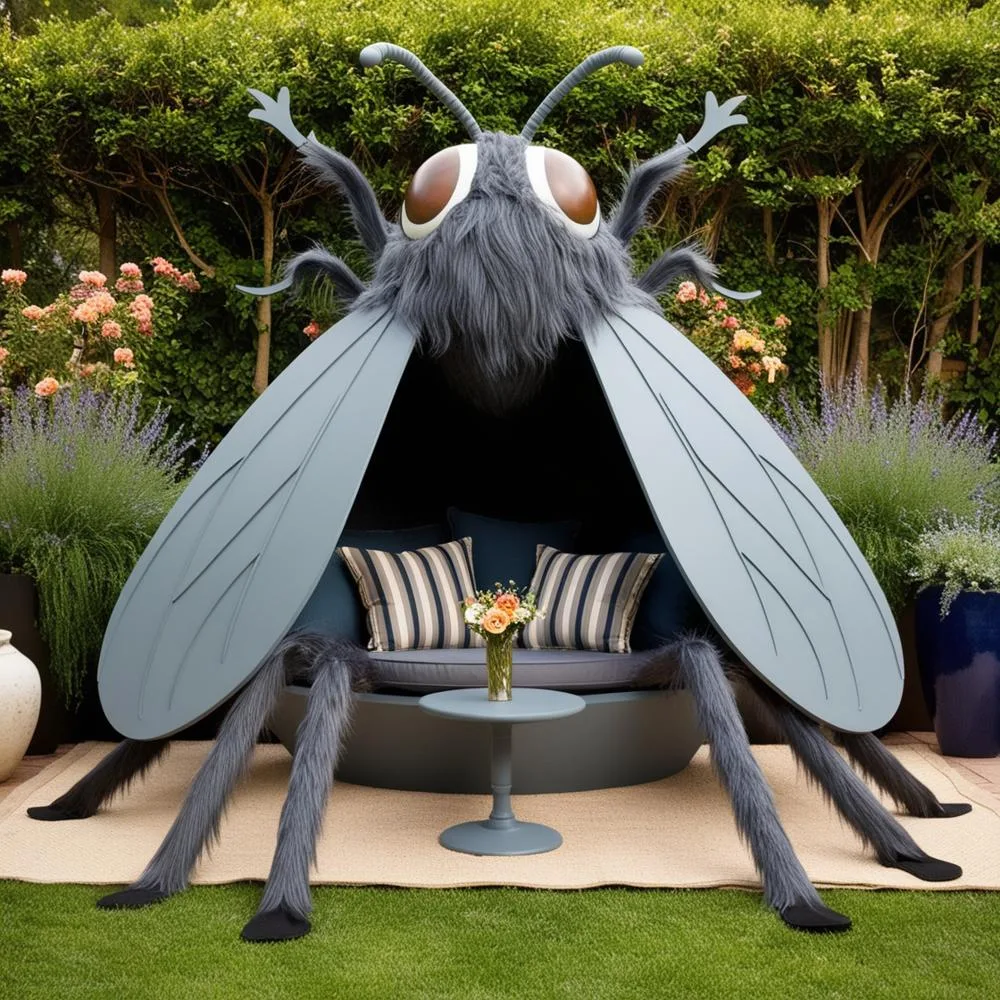
Creating Thematic Garden Rooms
An insect shaped outdoor seating area can serve as the cornerstone for a thematically cohesive garden room. By aligning plantings, hardscape elements, and additional decorative features with your chosen insect theme, you create immersive environments that feel thoughtfully curated rather than randomly assembled.
For butterfly seating, surrounding the area with butterfly-attracting nectar plants creates a living connection to the furniture’s design inspiration. Similarly, bee-themed seating naturally complements pollinator gardens filled with native flowering plants, while dragonfly designs enhance water-adjacent seating areas.
Consider how the insect theme might extend to other elements like pathways (perhaps following winglike curves), lighting fixtures (that might incorporate insect motifs), or water features (designed to attract the actual insects being celebrated).
Functional Zoning with Character
Beyond aesthetics, insect shaped outdoor seating areas can help define functional zones within larger landscape designs. Their distinctive forms naturally draw attention, signaling gathering spaces and inviting exploration and use.
Strategic placement creates natural progression through the garden:
- A butterfly bench placed at a garden entrance welcomes visitors and provides a transitional space for removing shoes or setting down bags
- Ladybug seating clustered in conversation arrangements defines social areas distinct from active play spaces
- Dragonfly daybeds positioned to capture optimal sun exposure create dedicated relaxation zones
- Bee-shaped individual seats scattered along garden paths offer moments of rest during garden exploration
This functional zoning helps maximize usable space while maintaining visual interest throughout the landscape.
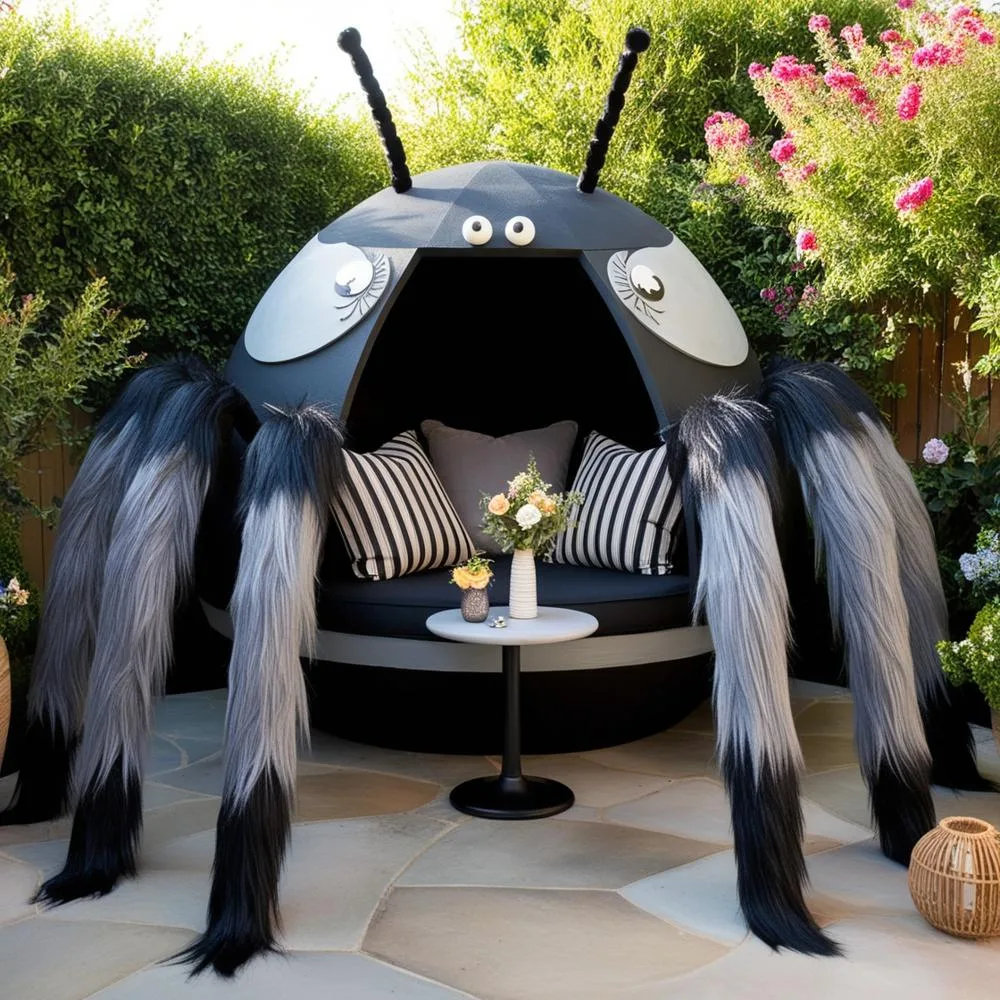
Seasonal Considerations and Adaptability
While permanent insect shaped outdoor seating provides year-round structure, seasonal adaptations help these areas remain vibrant and usable across changing conditions. Consider how your seating areas might transform with the seasons:
- Spring: Surrounding butterfly benches with early-blooming bulbs creates natural color harmony
- Summer: Adding shade elements like pergolas or fabric canopies over insect seating extends comfortable use during hot months
- Fall: Incorporating warm-toned cushions and nearby container plantings with autumn colors refreshes the space
- Winter: Adding outdoor-rated lighting to illuminate sculptural insect forms creates visual interest even in dormant gardens
Some designs incorporate modular elements that can be reconfigured seasonally, maximizing functionality regardless of weather conditions or social needs.
Celebrating Nature’s Smallest Heroes Through Functional Art
An insect shaped outdoor seating area represents far more than just a place to sit—it’s a celebration of the often-overlooked creatures that maintain our garden ecosystems. By choosing to incorporate these whimsical yet functional elements into our outdoor spaces, we make a statement about valuing all aspects of nature, from the grandest trees to the tiniest pollinators.
These seating areas create natural opportunities for education, particularly for young garden visitors who may develop greater appreciation for insect life through positive associations with beautiful, comfortable furniture inspired by these creatures. The tactile experience of interacting with these designs fosters connections that purely visual education cannot achieve.
Whether you choose a commercially available butterfly bench, commission a custom dragonfly daybed from a local artisan, or tackle a DIY bee-themed seating project, your insect shaped outdoor seating area will undoubtedly become a conversation piece that brings both practical function and artistic expression to your garden landscape. In a world increasingly dominated by mass-produced sameness, these distinctive design choices help our outdoor spaces reflect personal creativity and ecological consciousness.
As you plan your garden’s next evolution, consider how an insect shaped outdoor seating area might transform not just the appearance of your space, but also how you and your visitors experience, enjoy, and learn from your personal patch of nature.

